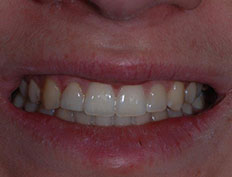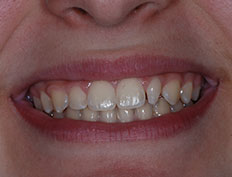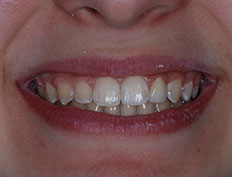Porcelain Veneers in Redmond, WA
Veneers, also called laminates, are one of the most natural looking restorations in dentistry. They can be used in all of the same cases as cosmetic composites, but have several advantages.
Benefits of Veneers
First, they are very dense and do not stain like composite can. The final finish on veneers is very smooth and glossy, as opposed to the more “satin” finish on composites. Veneers are stronger than composite and resist chipping or breaking, making them a better choice when the tooth is more heavily damaged.




The Procedure
Veneers are made of very thin porcelain or other ceramic material and are bonded to the surface of the tooth. Because they cover the entire front surface, they are an excellent choice to hide discolored or misshaped teeth. In cases with crooked teeth, some areas of the veneer are made thicker than others which results in the teeth appearing straight.
The procedure involves removing a small layer of enamel from the front of the tooth and then taking an impression of the area. This impression is sent to the lab that custom makes the veneers. In some cases, no tooth structure needs to be removed to achieve a beautiful result. If tooth structure does need to be removed, it is much less than what is required for a crown. The procedure can usually be completed without the need for anesthetic.
Temporary veneers are made to cover the teeth while the permanent ones are being made. If large changes are planned, the temporary veneers are made to look like the final ones so that the patient can evaluate the look and feel of alterations. At the final appointment, the new veneers are tried in and evaluated by both the patient and the dentist for fit and esthetics. If the shade and shape are a good fit, they are bonded to the teeth.
When Do We Need Veneers?
We use veneers for:
- Making crooked teeth look straight – “instant braces.”
- Teeth that are severely discolored, possibly from tetracycline.
- Teeth with large chips in them.
- Teeth with spaces between them (diastemas).
- Teeth that did not form correctly.
